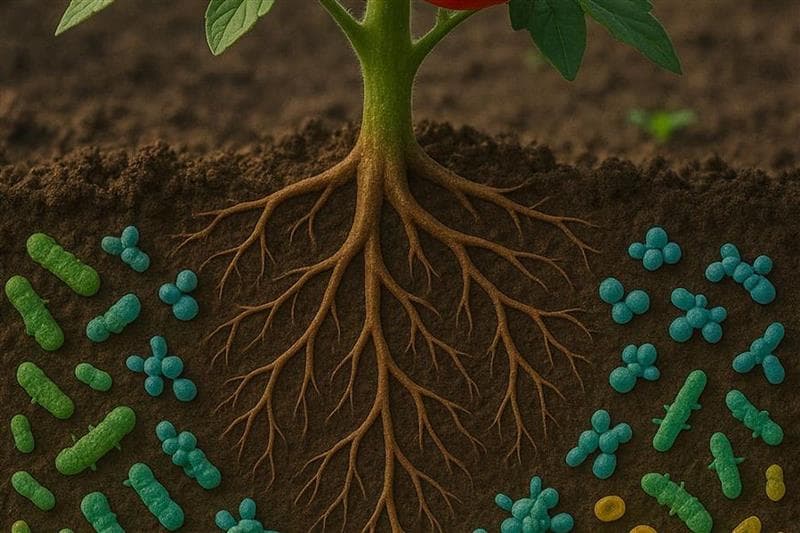
GLOBAL AGROVET
RESEARCH CONFERENCE - 2K25
and Food Science for Sustainable Future."
POWERED BY ARCC JOURNALS

POWERED BY ARCC JOURNALS




10 June 2025
The Rhizosphere: Where Healthy Roots Begin

10 June 2025
When it comes to growing healthy and high-yielding crops, most farmers focus on what’s above the ground — but the real magic happens beneath the surface. When we think of farming and plant growth, our focus is often on what we can see — lush leaves, strong stems, abundant fruits, and healthy flowers. Welcome to the rhizosphere, the hidden zone around plant roots that plays a major role in plant health, soil fertility, and crop productivity.
What is the Rhizosphere?
The rhizosphere is the thin layer of soil directly influenced by root activity — a zone just a few millimeters thick, but teeming with life. It’s a dynamic environment where plant roots and soil microbes interact continuously. Plants release root exudates — a mixture of sugars, amino acids, organic acids, enzymes, and other compounds — into the rhizosphere. These exudates act as food sources for soil microbes, stimulating a bustling microbial community. In turn, beneficial microorganisms such as bacteria, fungi (especially mycorrhizae), protozoa, and actinomycetes colonize this root zone, creating a mutualistic ecosystem. These microbes help plants by making nutrients more accessible, improving soil structure, and even fending off harmful pathogens.
Why the Rhizosphere is Important for Farmers
In the rhizosphere:
- Microbes convert unavailable nutrients into forms plants can absorb.
- Beneficial fungi improve root uptake of water and minerals.
- Microbial activity boosts soil structure, aeration, and water retention.
- Certain bacteria protect plants from soil-borne diseases naturally.
A healthy rhizosphere means stronger roots, faster growth, and better yields — all without extra chemical inputs.
How to Improve Rhizosphere Health
- Use organic soil conditioners or biofertilizers that boost microbial life.
- Avoid overuse of chemical fertilizers and pesticides that harm soil microbes.
- Apply compost, seaweed extract, and fulvic acid to feed root-zone organisms.
- Maintain proper soil moisture and pH for microbial balance.
Conclusion: Farming from the Ground Up
The rhizosphere may be invisible to the naked eye, but its impact is impossible to ignore. By understanding and supporting this hidden root zone, farmers can unlock a natural pathway to stronger plants, healthier soils, and higher yields — all while reducing reliance on synthetic inputs.

Become a Delegate
Attend GARCX 2025 as a delegate to gain expert insights, connect with global professionals, and explore cutting-edge solutions in agriculture and animal health.

Become a Speaker
Join global thought leaders at GARCX 2025 to share your research and insights. Present your work on integrated agriculture and animal health before an international audience.

Become a Sponsor
Showcase your brand as a pioneer in One Health innovation. Sponsoring GARCX offers high-visibility branding and strategic exposure to industry leaders and researchers.

Publish with Us
Submit your scientific work to be featured in esteemed ARCC Journals. Gain credibility and reach in the global agricultural and veterinary research community.

Become an Exhibitor
Display your solutions, products, or innovations in agriculture and animal health at the GARCX Expo. Network with stakeholders and boost your industry presence.

